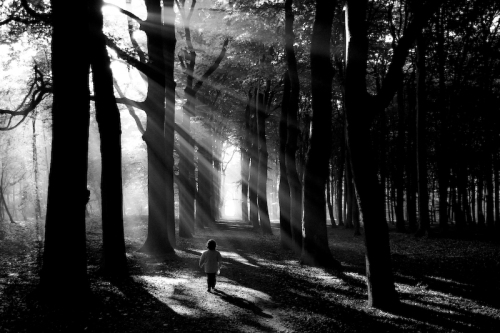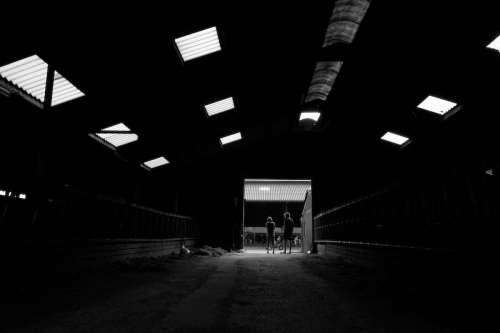
(按:這是GX200評測第一部分)
(Note: The text and photos below are published by courtesy and with copyright of the original author, Wouter Brandsma. The copyrighted Chinese translation is done by Nevin. Permission is required for use.)
 Ricoh GX200, f2.9, 1/80 sec, 35mm equivalent, ISO 100, -0.7 EV (B&W jpeg edited in Adobe Lightroom)
Ricoh GX200, f2.9, 1/80 sec, 35mm equivalent, ISO 100, -0.7 EV (B&W jpeg edited in Adobe Lightroom)
Late August I posted my first initial impressions of the Ricoh GX200. Being enthusiastic about the previous GX100, and the handling of the GX200 prior to my writing, I was somewhat disappointed by the quality of the GX200 RAW files. I had used the camera for a few weeks after receiving it without being able to review the photographs. When I viewed the photographs large on screen the first time I noticed I could not process the photographs the way I used and wanted to do. The editing resulted in more unintended noise, and I missed the byte. The following months I kept using the camera, changed in-camera settings, experimented with under- and overexposing, and had a relook at my image processing in Adobe Lightroom (or other applications) to improve the quality of the images.
And I can say that I have changed my initial thoughts about the GX200. I will explain how I have experimented with the camera and processing software to change my mind. Therefore I will describe a few important items that matters to me when it comes to a camera (though understand that every item is my personal opinion and the readers opinion may and can certainly differ). The three most important items are:
- Camera handling
- The images
- And appropriate workflow
Camera handling
In my first initial impressions I described some of the improvements to the previous model, the GX100. Probably most noticeable is the larger LCD screen with more pixels. As a result the screen is much sharper and works pleasantly. It remains a bright and clear screen that is very useful at bright sunshine. The addition of the third MY setting and an extra function button are welcome new features too. With the GX100 I had assigned the AE option to the function button, but I had to use my left hand to press that button. Now I have the AE option assigned to the second function button, and I can change the most important settings with my right hand. The first function button is not assigned to ISO, so when I want to change the ISO value I can access that menu with a single button.
 Ricoh GX200, f4.3, 1/440 sec, 28mm equivalent, ISO 100, -0.3 EV (DNG edited in Adobe Lightroom)
Ricoh GX200, f4.3, 1/440 sec, 28mm equivalent, ISO 100, -0.3 EV (DNG edited in Adobe Lightroom)
The shape and grip of the GX200 haven’t changed, but there was really no need to in my opinion. The camera is slightly larger than the Ricoh GR Digital II, but significantly smaller than the Canon Powershot G9 and G10. The camera really has the appearance of a serious camera with a nice black finish.
The camera comes standard with a removable lens cap. Some people, me included, do sometimes forget to remove it when switched on. Thankfully the screens displays a warning. And for those interested, Ricoh supplies a handy pizza like lens cap.
The most significant improvement of the GX200 are the writing times when shooting RAW. It is fast and nimble, and there is basically no hesitation to not shoot RAW with this camera. It now even can shoot 1:1 RAW (requested by many)! Ricoh also added flash compensation to the GX200 which works perfectly in my opinion.
I personally think that Ricoh listened really well to their Ricoh GX100 users, and last year reviewers. Many of the changes on the camera are related to the handling and were requested on many forums and in reviews. What remained is an excellent, easy, comfortable, and most definitely fast compact camera that fits within a niche market. The camera has some unique features unrivaled by its competition, like the step zoom, the three recorded settings, the clear and user-friendly LCD screen and user interface.
 Ricoh GX200, f4.3, 1/1400 sec, 28mm equivalent, ISO 100, -0.3 EV (B&W jpeg edited in Adobe Lightroom)
Ricoh GX200, f4.3, 1/1400 sec, 28mm equivalent, ISO 100, -0.3 EV (B&W jpeg edited in Adobe Lightroom)

Comments